Singing in the Dark: 7 of the Most Captivating Nighttime Songsters in the U.S.
For good reason, birds are emblematic of the morning — that's when many are most vocal — but some species find their voice after dark, and listening to these birds chirping at night can be a uniquely enchanting (or eerie) experience.
Why do birds sing at night? Some species, like the Eastern Whip-poor-will, are nocturnal and only communicate after dark because that's when they're awake. Others, like Northern Mockingbirds, are typically active during the day but will vocalize into the night when searching for mates. In both cases, the night holds advantages. Ambient sounds are minimal and there is less competition — at least vocally — with other birds.
Still, there are too many birds that sing at night — or at least late into the evening — to easily list here. Instead, we've combined classic late-night bird sounds with a few lesser-known, but no less inspired, nocturnal melodies, to create a playlist of the most captivating nighttime bird songs to be found in North America. Enjoy!
Eastern Whip-poor-will
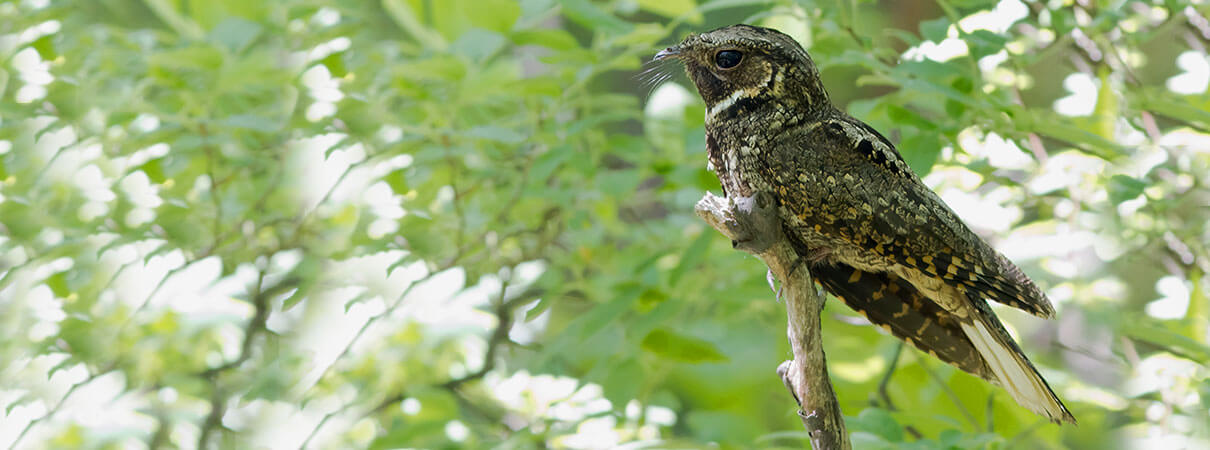
Eastern Whip-poor-will. Photo by Frode Jacobsen
Technically speaking, the Eastern Whip-poor-will is not a songbird, yet its fabled call, which inspired its name, has enchanted generations. Breeding males repeat their songs deep into spring and early summer nights within the bird's remaining eastern U.S. range.
Adeptly camouflaged, these nocturnal birds are more often heard than seen. But even that has become more difficult in recent years. Although still considered common in some heavily wooded regions, Eastern Whip-poor-will populations have declined by 75 percent over the last 50 years, and the species has been added to the State of North America's Birds Watch List. The cause? Collisions with autos and insect declines may play a role, but the loss of forests to agriculture and development is likely the main driver.
ABC and partners are working to help address the decline of aerial insectivores including whip-poor-wills. Our Migratory Bird Program also aims to address the reasons for decline of whip-poor-wills and many other birds throughout their life cycles.
Eastern Whip-poor-will (Doug Welch, XC469348. Accessible at www.xeno-canto.org/469348.)
Yellow-breasted Chat
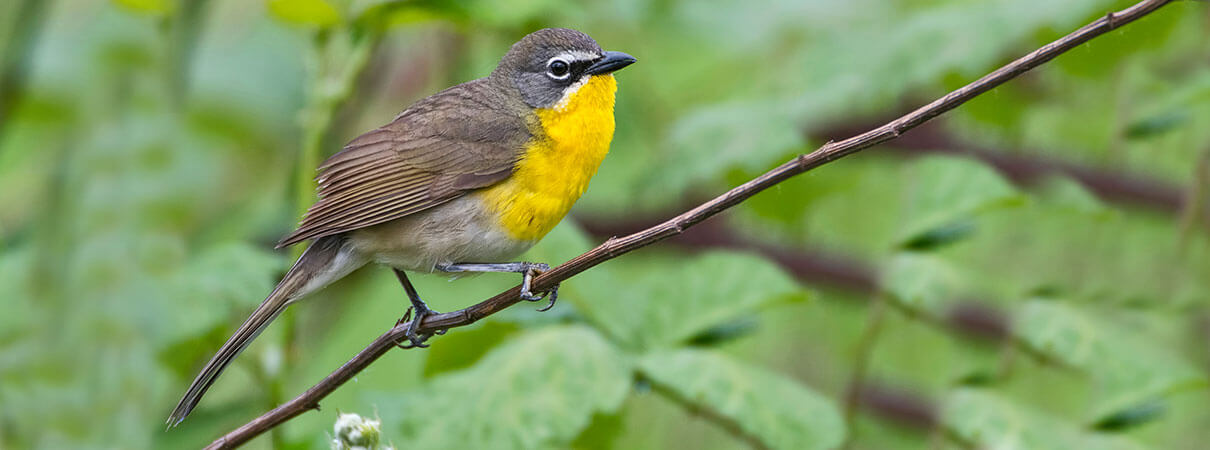
Yellow-breasted Chat. Photo by Punkbirdr/Shutterstock
The Yellow-breasted Chat's "song" is a weird and wonderful mix of cackles, clucks, whistles, and hoots. Although not nocturnal, these birds do sing at night, especially in their springtime breeding season. Frustrated birders sometimes compare the vocalizations of concealed chats to mocking laughter.
Like so many other bird species, chats are threatened by habitat loss. Over the last 50 years, their population has declined by 37 percent. As a result, the species is now listed as threatened, endangered, or of special concern in several states.
Yellow-breasted Chats benefit from managed forestry efforts by ABC and partners, including the Sustainable Forestry Initiative, that create and preserve semi-open habitat. Several habitat management projects designed to aid rapidly declining Golden-winged Warblers also benefit Yellow-breasted Chats.
Yellow-breasted Chat (Paul Marvin, XC486580. Accessible at www.xeno-canto.org/486580.)
Barred Owl
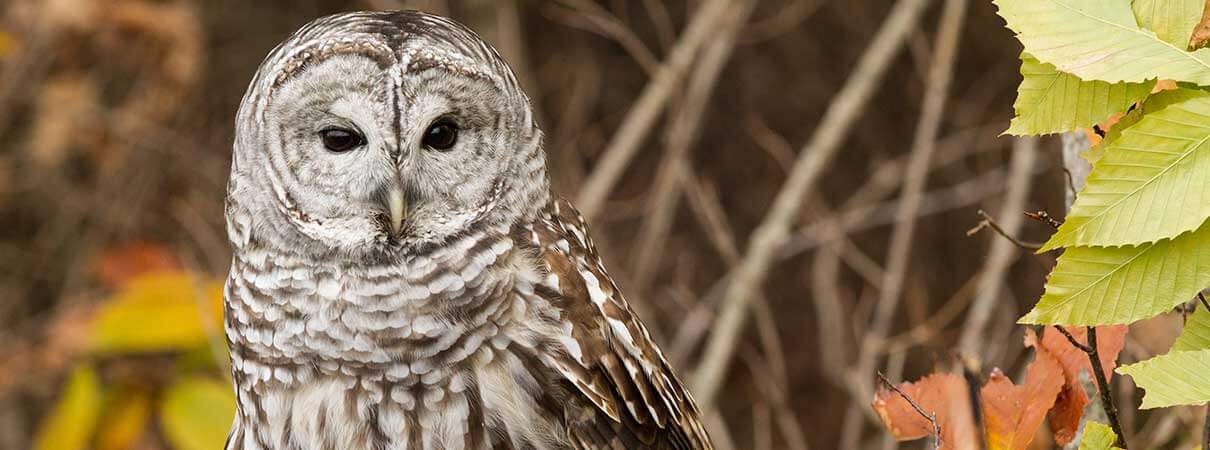
Barred Owl. Photo by Dennis Donohue/Shutterstock
The Barred Owl's inimitable “who-cooks-for-you” call is one of the best-known nighttime bird sounds in the U.S. But these hoots are only a small sample of this large raptor's repertoire. During mating season, Barred Owls engage in raucous duets combining a range of gurgles, caws, hoots, and cackles.
When hunting, however, Barred Owls use silence to their advantage. Their unique feather structure, which includes tiny serrations on their flight feathers, allows them to fly in virtual silence. This quiet flight plus excellent nighttime vision make Barred Owls outstanding predators.
Previously restricted largely to mature forests in eastern North America, these owls now inhabit large portions of the Pacific Northwest as well. As their range has expanded, so have Barred Owl numbers, which have grown by 1.5 percent annually over the last 50 years.
Barred Owl (Lance A. M. Benner, XC500514. Accessible at www.xeno-canto.org/500514.)
Common Loon

Common Loon. Photo by Tom Reichner/Shutterstock
Few bird sounds are as mournful or memorable as the Common Loon's yodel, but that's not this large bird's only claim to fame. When darkness falls, Common Loons can frequently be heard producing cackling tremolos and wolf-like wails that are no less haunting.
Common Loon populations in the northern U.S. have declined drastically in the face of pollution from coal-burning power plants. Like Bald Eagles and Ospreys, Common Loons dine on fish, receiving the full dose of toxins, such as mercury, as they accumulate up the food chain.
Migrating loons also may be vulnerable to collisions, particularly with wind turbines sited on lakes or other large bodies of water. In December 2019, ABC and partners filed suit in federal court against the U.S. Department of Energy and U.S. Army Corps of Engineers to halt the construction of wind turbines on Lake Erie that could put Common Loons and many other migrating bird species at risk.
Common Loon (Jelmer Poelstra, XC83547. Accessible at www.xeno-canto.org/83547.)
Eastern Screech-Owl
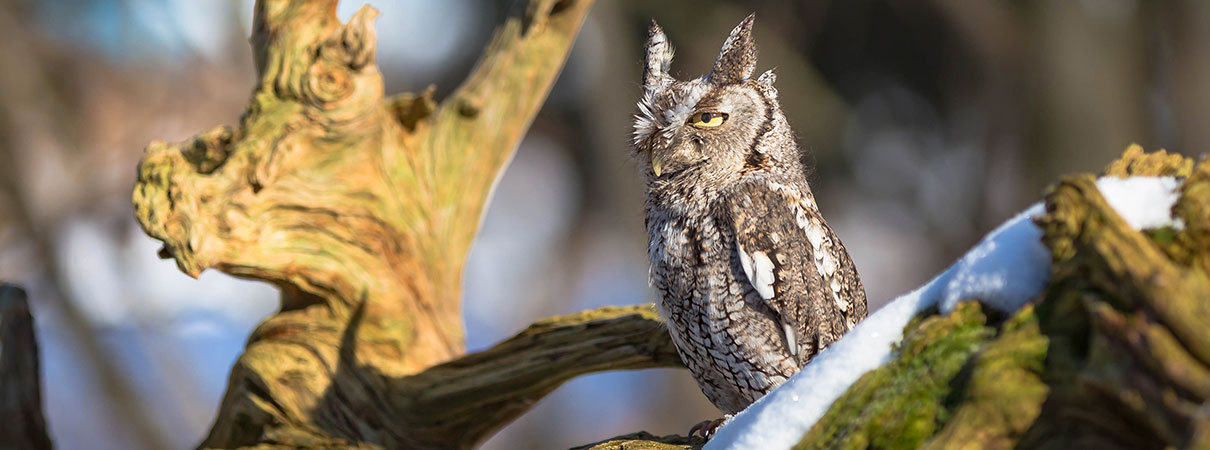
Eastern Screech-Owl. Photo by Imran Ashraf/Shutterstock
Like the Barred Owl, Eastern Screech-Owls produce an impressive array of nighttime sounds. When defending territory, males employ a whinnying call to warn off potential intruders. To communicate, pairs and families will make a cooing tremolo call. While some birds chirping at night repeat the same sounds, Eastern Screech-Owls are different: They can hoot, bark, and, of course, screech.
Although the Eastern Screech-Owl is still considered a common species, numbers are in decline in some areas. These owls are often the victims of collisions with glass and vehicles, and those nesting in suburbs and orchards are vulnerable to pesticides. As with many other species, habitat loss is a threat in many areas.
ABC's Bird-Smart Glass program offers a number of solutions to protect Eastern Screech-Owls. Our Bird-Friendly Life web page also suggests ways to protect birds and bird habitats. If you have a wooded yard, you might even consider building a screech-owl nest box.
Eastern Screech-Owl (Will Sweet, XC453924. Accessible at www.xeno-canto.org/453924.)
Upland Sandpiper
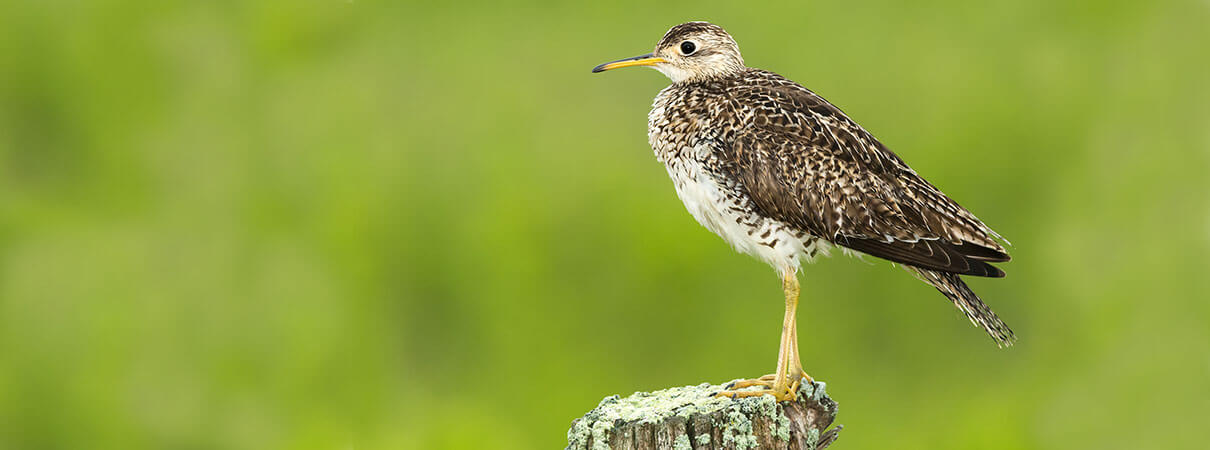
Upland Sandpiper. Photo by Paul Reeves Photography/Shutterstock
The Upland Sandpiper's ecstatic song bounces over the prairie during spring months when the birds are breeding. The melody, which combines wild trilling with an ethereal whistle, is typically used by males, which vocalize well into the night. Like other birds that sing at night, the Upland Sandpiper is not a nocturnal species and can be spotted during daylight hours.
Although Upland Sandpiper populations have remained steady as a whole over the last 50 years, regional declines have led nearly two dozen states and provinces in the U.S and Canada to list the bird as a species of concern. Upland Sandpipers winter in South America each year and hunting remains a problem along migration routes. But the major threat they face is habitat loss, as native grasslands are transformed into cropland.
In the United States, ABC is helping Upland Sandpipers and other grassland birds by promoting practices that incentivize sustainable grazing practices and grassland retention, restore formerly cropped lands, and reduce herbicide use. In Mexico, we're working with local partners to ensure that critical grassland habitat for migrating sandpipers remains firmly protected.
Upland Sandpiper (Paul Marvin, XC299641. Accessible at www.xeno-canto.org/299641.)
Northern Mockingbird

Northern Mockingbird. Photo by Michael Stubblefield
With the ability to learn nearly 200 different songs, Northern Mockingbirds are veritable avian jukeboxes. These expert mimics find inspiration in the songs of other birds and sometimes rock their tunes around the clock. This happens most often when males are searching for mates, but full moons also get these crooners going.
Although Northern Mockingbirds remain common in many parts of the U.S., their numbers have waned by more than 20 percent over the last 50 years. This isn't their first decline: During the 19th century, these songsters were so highly prized for their musical abilities that many were caged, and mockingbirds virtually disappeared from some parts of their range.
ABC and partners support healthy Northern Mockingbird populations by managing habitat throughout much of the bird's U.S. range. Our Cats Indoors program is also helping to reduce cat-related fatalities, which claim the lives of approximately 2.4 billion birds — including Northern Mockingbirds — each year in the U.S.
Northern Mockingbird (Omar Suárez García, XC435872. Accessible at www.xeno-canto.org/435872.)


















































